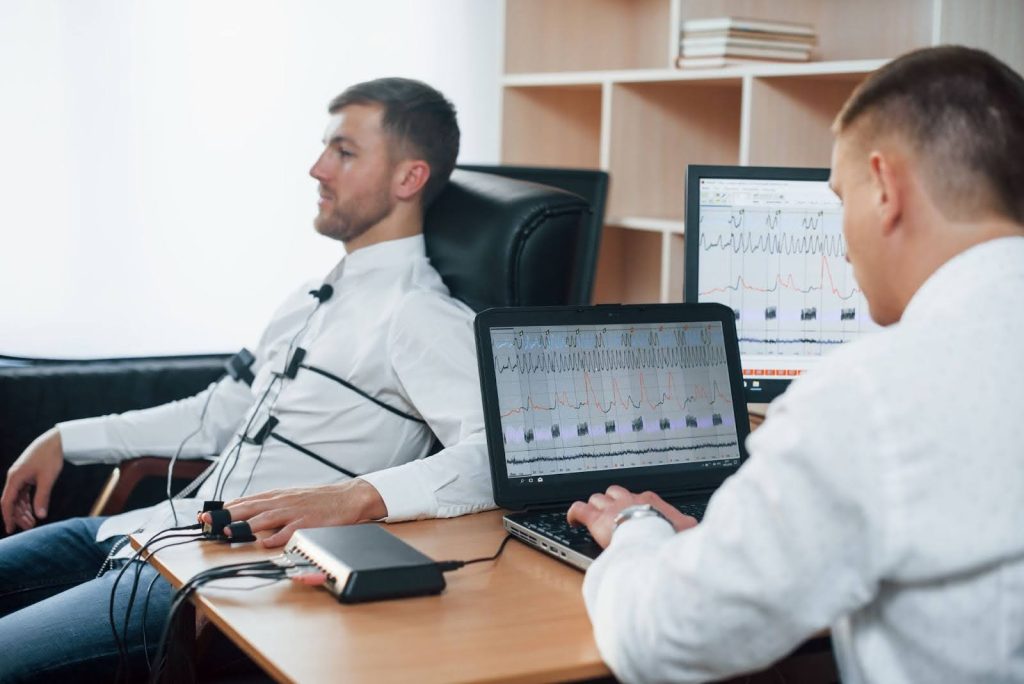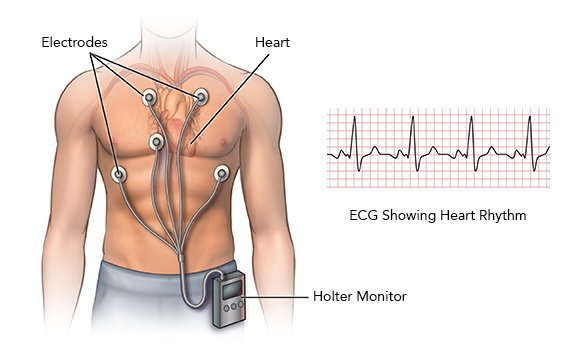

Source link: https://www.ncbi.nlm.nih.gov/pmc/articles/PMC9802010/
A Holter monitor, also known as a continuous ambulatory electrocardiography (ECG) recorder, is a portable device used to continuously monitor and record the electrical activity of the heart over a period of 24 to 48 hours or longer. It is typically worn by the patient during their normal daily activities to detect and record any abnormal heart rhythms or episodes of symptoms such as palpitations, dizziness, or chest pain.
Procedure
During a Holter monitor test, the patient is fitted with electrodes attached to their chest, which are connected to the Holter monitor device worn around the waist or carried in a pocket. The electrodes detect the electrical signals produced by the heart and transmit them to the monitor for recording. The patient is instructed to keep a diary of their activities and any symptoms experienced during the monitoring period, which can help correlate recorded events with specific activities or triggers.
Uses of Holter Monitoring
Holter monitoring is used for various diagnostic purposes, including:
- Detecting Arrhythmias: Holter monitoring is used to detect and diagnose abnormal heart rhythms or arrhythmias, such as atrial fibrillation, ventricular tachycardia, or bradycardia, that may not be captured during a standard ECG.
- Assessing Symptoms: Holter monitoring helps evaluate symptoms such as palpitations, dizziness, fainting, or chest pain that may be related to heart rhythm disturbances.
- Assessing Treatment Response: Holter monitoring may be used to assess the effectiveness of medications or treatments for arrhythmias and to monitor changes in heart rhythm over time.
Advantages of Holter Monitoring
Holter monitoring offers several advantages over standard ECG testing, including:
- Longer Recording Period: Holter monitoring provides continuous recording of heart rhythm over an extended period, allowing for detection of intermittent or sporadic arrhythmias that may not be captured during a brief ECG.
- Ambulatory Monitoring: Holter monitoring allows patients to go about their normal daily activities while being monitored, providing a more accurate representation of their usual heart rhythm and any symptoms experienced in real-world settings.
- Symptom Correlation: Holter monitoring allows for correlation of recorded arrhythmias or symptoms with specific activities, triggers, or events recorded in the patient’s diary.
Risks and Considerations
Holter monitoring is generally safe and noninvasive, but it carries some risks and considerations, including:
- Skin Irritation: The electrodes used to attach the Holter monitor to the skin may cause mild skin irritation or discomfort in some patients.
- Limitations of Detection: Holter monitoring may not capture all arrhythmias or symptoms experienced by the patient, particularly if they occur infrequently or during periods when the monitor is not being worn.
- Interpretation Challenges: Holter monitoring recordings require careful analysis by trained healthcare providers to interpret the data accurately and identify clinically significant arrhythmias or abnormalities.
Conclusion
Holter monitoring is a valuable diagnostic tool in cardiology, providing continuous recording of heart rhythm over an extended period to detect and diagnose arrhythmias and assess symptoms related to abnormal heart rhythms. When used appropriately and interpreted by trained healthcare providers, Holter monitoring can help guide treatment decisions, monitor treatment response, and improve patient outcomes.



